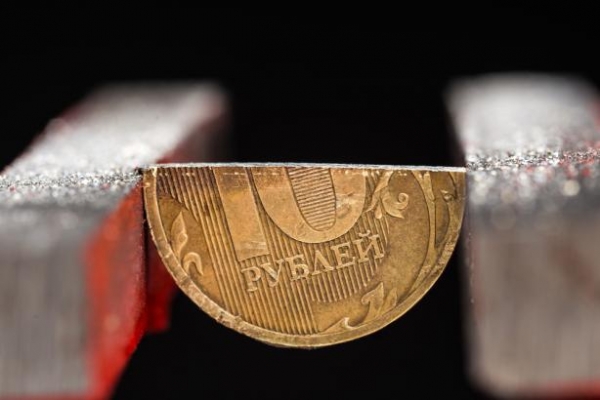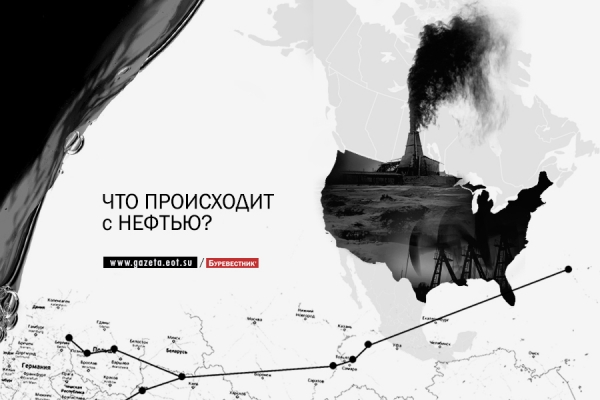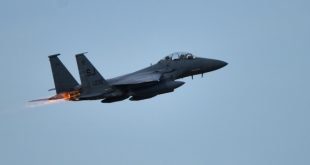
As Russia tries to get off oil dependence
The Russian budget revenues from the sale of oil and gas melted the whole of last year behind falling oil. The budget cuts, apparently, will continue in 2016. Many exporters have not helped to increase foreign exchange earnings, even the devaluation of the ruble. But there are domestic products, which in the world remains stable demand. “Ribbon.ru” has studied the structure of non-oil exports and found an unexpected point of growth.
Went downhill
Revenue from the export of Russian goods, including oil and gas, fell last year by almost a third, to 343 billion dollars, follows from materials of the Russian export center (REC) and the FCS. The volume of export of hydrocarbons remained at the same level, analyst Raiffeisenbank Andrey Polischuk. Earnings of exporters, which still depends on the formation of the Russian budget, he said, fell amid diving prices. Similar situation with oil products (gasoline, diesel, kerosene and other): physical volume of supplies increased 4 percent and revenue fell to 42, accounting for 67,4 billion.
Falling of oil quotations the Russian government, urging to “get off oil needle”: the share of non-oil exports last year increased from 51 to 54 percent. “So, we are able without this to feed itself. Before fed, when oil was not to our export commodity. We must change and to use this situation,”— said in February Prime Minister Dmitry Medvedev.
However, a departure from the hydrocarbon filling of the budget cannot be considered solely by the credit of the government, and the adjustment is rather a Pyrrhic victory: with declining oil and gas revenues shrank and the Russian budget. In December the government decided on a 10% sequestration that will allow you to save more than 500 billion rubles. In January the media reported about the possibility of further cuts in costs in excess of the approved limit.

Photo: Evgeny Pavlenko / Kommersant
Exporters of non-oil goods, including petroleum products, metal and engineering products, automobiles, wheat, fertilizers, missed for the year to 69 billion dollars — the income dropped to 187 billion.
Nezolotaja billion
On the export of at least 24 billion dollars earned last year, the Russian metallurgists. But only few were able to follow the advice of the head of the Cabinet. Black Steelworkers have lost a significant portion of currency proceeds on sales of semi-finished steel, sheet steel and cast iron. The same on the market of non-ferrous: Nickel, copper wire and ferro alloys. The chief of analytical Department of investment company TCS Partners Andrey Tretinnikov explained that the prices of iron and Nickel fell by about a third. While physical supplies of pig iron reached a 7-year high (of 5.34 million tons), and Nickel was reduced by 5 percent to 226,4 thousand tons.
With the exception of the plants for the production of aluminium and refined copper exports earned 6.1 billion dollars (plus 17 percent by 2014) and 3.1 billion (plus 60 percent). According to the Deputy chief editor of the magazine “metal supply and sales” Leonid Khazanov, to increase exports of aluminum by 22 percent, to 3,48 million tons, helped by the devaluation of the ruble that made metal from Russia more attractive in terms of price compared to similar products from other countries. In the case of refined copper, continues Khazanov, it is the export of copper cathodes, which in August 2014 the government of Russia has nullified the export duty. For the same reason, dropped the export of copper wire rod, because it processed into cathodes for export was not profitable.
But the most unlucky miners: in 2015, the revenues from the export of unprocessed gold fell by half, to $ 1.5 billion, according to data REC. Khazanov considers it natural: gold prices went down rapidly, falling by December to $ 1062 per ounce. The reduction in the supply of gold, the largest importer of which is Switzerland, he attributes the decline in purchases of Swiss banks. Remained relatively stable export supplies of fertilizers, than on domestic producers earned 8.9 billion dollars.
But export duties on wheat, introduced in February 2015, the Russian government did not allow the farmers to capitalize on the devaluation. Shipments to Egypt, Turkey, Iran, Azerbaijan, South Africa and other countries decreased by 27 percent, to 3.9 billion dollars. Physical volume of supplies of Russian wheat abroad, according to the Ministry of agriculture, for the first nine months of 2015 fell by a quarter. However, despite the negative trends, The Wall Street Journal, citing data from the Ministry of agriculture of the USA in February predicted that Russia in 2016 to oust the US and Canada with the leading world exporters of grain.
The Germans liked supercomputers
More than 70 percent growth over the past year demonstrated Russia in the supply of “parts of computers”, selling them at 1.1 billion dollars. These products went mainly to Germany (98 percent), some sent to India, Algeria, Malaysia and China.
The increase in exports to Germany “parts of computers” 71%, or 469 million dollars due including the supply of supercomputers company “T-platforms”, explained “the Tape.ru” Director for strategic development, REC Michael Snow. Bureau of industry and security U.S. Department of Commerce in 2013 included the company in the sanctions list, but in early 2014 it was reported about removal from it of sanctions.
Senior analyst RAEC Karen Ghazaryan believes that the Russian high-tech products with adequate state support good chances on the international market. “First, we should not interfere with exporting. And secondly, the state should pay attention to what measures the United States, China and the European Union countries to support their own companies and to align conditions of competition”, — he noted. As a positive example, the expert mentioned in the state Duma the bill about the taxation of electronic services, greatly facilitates the refund of VAT to domestic software developers. Earlier, the President of the partnership “RUSSOFT” Valentin Makarov said “the Tape.ru” that in 2015 export contracts has brought the Russian developers BY about $ 7 billion.
Hi, the weapon!
According to the REC, by the stable growth of non-oil export products of Russian enterprises are leading Iraq, Vietnam, Peru. In these countries over the past three years were supplied goods by 9.8 billion: aircraft, weapons, ships, radar equipment.
And the absolute growth of non-oil goods from Russia excels Algeria: deliveries increased to 2 billion dollars, almost double. It is followed by Viet Nam — 1.7 billion dollars (plus 20 percent), Bangladesh — 866 million (an increase of almost 4 times) and the Kuwait — 406 million (nine times). In Kuwait, Russia began to put more copper wires and cathodes, as well as barley.
Algeria and Vietnam — traditional markets for the Russian “defense”. Vietnam, in particular, in February came the fifth submarine of project 636. In Peru, Russia supplies helicopters: at the beginning of this year was rushed there last Mi-171 contract for 2013 by half a billion dollars.
According to the REC, the supplies of Russian goods to Iraq in 2012-2015 grew by 80 percent annually. In 2015 there exporters earned $ 1.8 billion. Since the summer of 2014, a sharp increase in the export of Russian military goods to Iraq is associated with extra supplies to aid in the fight against the militants, not the terrorist group “Islamic state”. Supplied helicopters Mi-28NE, Mi-35M and Mi-17V-5 helicopters, attack aircraft su-25 air defense missile-gun complexes “Pantsir-S1”, heavy flamethrower system TOS-1A “the Sun” and other weapons.
Weapons brings a considerable part of non-oil export revenues for export to Egypt and India. A source in OPK has explained “the Tape.ru” that we are talking primarily about aviation and land transport. “A significant share of deliveries of military products in exports to India and Egypt is explained, on the one hand, a high level of development of military-technical cooperation between Russia and mentioned countries (in particular, in India collect the T-90 and su-30MKI — approx. “The tape.ru”), on the other — there implemented programs for technical re-equipment of air force and other military units”, — he added. According to the Center for analysis of strategies and technologies (tsast), export volume of products and services for military use last year reached 15 billion dollars.
Car slowed down on the border
According to the REC, the export of passenger cars last year fell by more than a quarter. In 2015 the Russian factories were able to sell abroad the products of 1.1 billion dollars — by 25.7 percentage points lower than in 2014. Russian cars are sourced mainly in Kazakhstan, which accounts for more than half of total exports. Domestic cars also are bought in Belarus (the fifth part of the exports), China (7 per cent), Germany and Turkey (4 and 3 percent).
The analyst of “VTB Capital” Vladimir Bespalov explains the failure of the Russian car industry first of all the situation in Kazakhstan, where in the summer of 2015 devalued the tenge. Sales of vehicles in the country, according to the Association of Kazakhstan automobile business dropped by 40 percent.

Photo: Oleg Karsaev / Kommersant
Sales “AVTOVAZ” in the CIS fell by 58 percent, to 19.5 thousand cars, the export of “GM-AVTOVAZ” (produces Chevrolet NIVA) decreased by 40 percent, to 2.4 thousand cars, reported in the beginning of the year, “Kommersant” with reference to sources. Stalled at the border, according to the publication, Oise domestic and export sales fell by 24 percent, to 4.8 thousand cars.
Bespalov added that the problems with supply of Russian cars abroad emerged the year before, when the mills actually lost one of the key export markets of Ukraine.
In addition, at the end of 2014 amid a sharp depreciation of the ruble, the citizens of Kazakhstan and Belarus rushed to Russia for new cars, thus largely satisfying the existing demand. “At the end of 2014, many retail sales, held in the Russian statistics, were actually acquisitions of the Kazakhs and Belarusians in Russia — they bought cars here and exported them to yourself. In fact it was the hidden export,” says the analyst. GAZ group data on exports does not disclose, export of “KAMAZ” fell last year by 4 per cent, to 5.8 thousand trucks, “Ural” even managed to achieve 15% sales growth on foreign markets (2.3 million cars).







